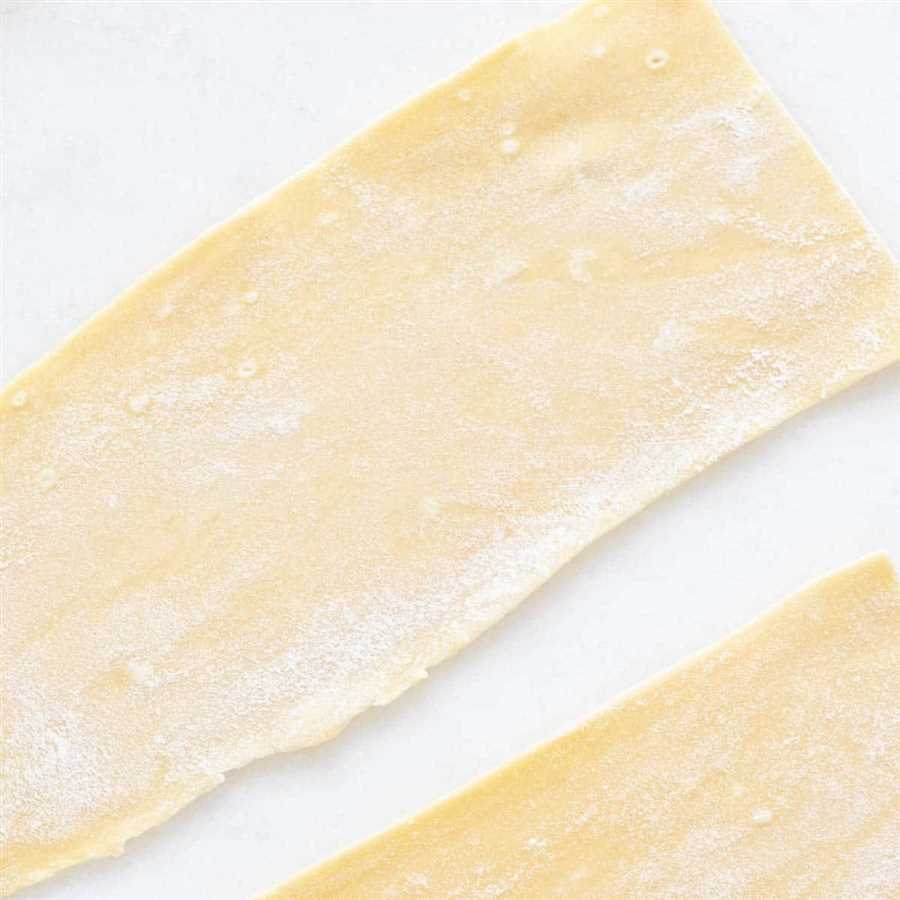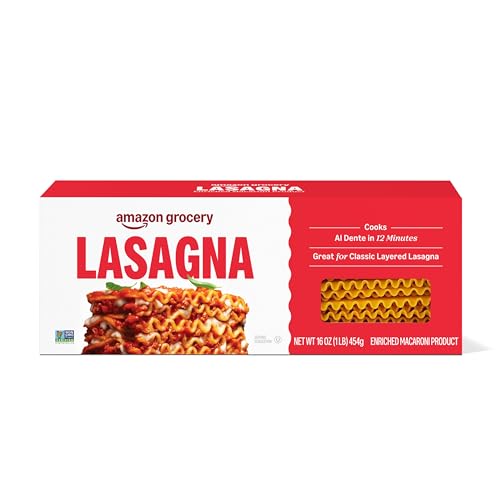When it comes to making lasagna, there are varying opinions on whether or not to cook fresh pasta before assembling the dish. Some argue that cooking the pasta beforehand ensures that it will be fully cooked and tender when the lasagna is finished, while others believe that the pasta will cook perfectly during the baking process.
Those in favour of pre-cooking the pasta argue that fresh pasta needs to be cooked beforehand to eliminate any excess moisture and prevent a soggy lasagna. This approach also allows the pasta to absorb some of the sauce, enhancing the overall flavour of the dish. By pre-cooking the pasta, it can be easily layered in the lasagna without worrying about whether or not it will fully cook during baking.
On the other hand, proponents of not pre-cooking the pasta believe that fresh lasagna sheets are designed to be baked directly from their raw state. The pasta absorbs the sauce and any excess moisture, resulting in a perfectly cooked and tender lasagna. By skipping the pre-cooking step, you can also save time and dishes, making the process more efficient and convenient.
Ultimately, the decision to cook fresh pasta before making lasagna is a matter of personal preference. Both methods have their merits and can result in a delicious lasagna. Whether you choose to pre-cook the pasta or bake it raw, make sure to follow a trusted recipe and adjust the cooking time accordingly.
Is it necessary to cook fresh pasta for lasagna?
When making lasagna, there can be some confusion regarding whether fresh pasta needs to be cooked before using it in the dish. While traditional lasagna recipes call for dried pasta that has been boiled first, using fresh pasta can offer a different texture and taste to the dish.
When using fresh pasta sheets for lasagna, there is no need to pre-cook them. Fresh pasta sheets are typically soft and pliable, allowing them to cook perfectly when baked with the other ingredients of the lasagna. The moisture from the sauce and other components in the dish will cook the fresh pasta sheets, resulting in a tender and flavorful lasagna.
Using fresh pasta for lasagna can also save time and simplify the cooking process. Since there is no need to boil and drain the pasta beforehand, it can be a convenient option for those looking to prepare lasagna quickly and easily.
However, it is important to note that fresh pasta can absorb more liquid than dried pasta. This means that if the sauce or other ingredients in the lasagna are very wet, the fresh pasta sheets may become overly soft or even mushy during baking. To prevent this, it is recommended to use a thicker, more substantial sauce and to not over-sauce the lasagna.
In conclusion, while it is not necessary to cook fresh pasta for lasagna, it can be a delicious and convenient alternative to using dried pasta. It is important to consider the moisture content of the other ingredients and adjust the recipe accordingly to avoid a soggy lasagna. With the right techniques and attention to detail, fresh pasta can result in a flavorful and satisfying lasagna dish.
Fresh pasta vs. dried pasta
When it comes to making lasagna, one of the main decisions is whether to use fresh pasta or dried pasta. Both options have their pros and cons, and it ultimately depends on personal preference.
Fresh pasta:
Fresh pasta is made from scratch using flour, eggs, and salt. It has a delicate texture and a tender bite. The main advantage of using fresh pasta in lasagna is that it cooks faster and doesn’t require pre-cooking. Simply layer it with the other ingredients, and it will cook perfectly in the oven. Fresh pasta also absorbs more sauce, giving the lasagna a richer flavor.
However, fresh pasta can be more expensive and harder to find compared to dried pasta. It also has a shorter shelf life and needs to be used immediately or frozen if not being used right away. Additionally, its delicate texture may not hold up well to heavy sauces or long cooking times.
Dried pasta:
Dried pasta is more readily available and can be stored for a longer period of time. It is made from semolina flour and water, which gives it a firmer texture. In lasagna, dried pasta needs to be boiled before assembling the dish. This extra step adds time to the cooking process.
Dried pasta has a firmer texture, which allows it to hold up well to heavy sauces and long cooking times. It also tends to hold its shape and not become mushy when cooked. Additionally, dried pasta is more affordable compared to fresh pasta.
However, the main drawback of using dried pasta in lasagna is that it may not absorb as much sauce as fresh pasta. It has a different texture and flavor profile, which may not suit everyone’s taste.
In conclusion, both fresh pasta and dried pasta can be used to make delicious lasagna. Fresh pasta cooks faster and absorbs more sauce, but it can be harder to find and more expensive. Dried pasta is more widely available and has a firmer texture, but it requires pre-cooking and may not absorb as much sauce. Ultimately, the choice between fresh and dried pasta depends on personal preference and the desired outcome.
Advantages of using fresh pasta for lasagna
When it comes to making lasagna, using fresh pasta instead of dried pasta can bring several advantages to the table.
1. Enhanced taste and texture
Fresh pasta has a delicate and silky texture that adds a luxurious element to your lasagna dish. It also has a richer flavor compared to dried pasta, giving your lasagna a more authentic and delicious taste.
2. Faster cooking time
Unlike dried pasta, fresh pasta cooks much faster. This means that when making lasagna with fresh pasta, you can significantly reduce the cooking time. It especially comes in handy when you’re in a rush or have unexpected guests.
3. Improved absorption of sauces
Fresh pasta has a porous surface compared to dried pasta, which allows it to absorb more sauce. This helps the pasta to become moist and flavorful, contributing to a more enjoyable lasagna experience. The sauces also cling better to fresh pasta, enhancing the overall taste of the dish.
4. More flexibility in shaping
Fresh pasta is more pliable and easier to work with compared to dried pasta. It can be rolled, layered, and shaped with ease, making it ideal for creating beautiful and visually appealing lasagna dishes. Whether you prefer a traditional rectangular or a uniquely shaped lasagna, fresh pasta gives you more creative freedom.
In conclusion, using fresh pasta for lasagna brings a multitude of advantages. It elevates the taste and texture of the dish, reduces cooking time, enhances sauce absorption, and allows for more creativity in shaping. So why not give fresh pasta a try and take your lasagna to the next level?
Potential issues with using fresh pasta
While using fresh pasta in lasagna can result in a delicious and tender dish, there are a few potential issues to consider:
1. Texture
Fresh pasta has a softer and more delicate texture compared to dried pasta. This can be a disadvantage when making lasagna, as the layers may become too soft and mushy when cooked. The fresh noodles may also absorb more liquid from the sauce, resulting in a more watery lasagna.
2. Cooking time
Fresh pasta cooks much quicker than dried pasta. If using fresh pasta sheets in lasagna, it is important to adjust the cooking time accordingly. Overcooked fresh pasta can become gummy and lose its shape, affecting the overall texture of the lasagna.
It is recommended to:
- Make sure the fresh pasta is al dente before assembling the lasagna.
- Consider partially cooking the fresh pasta sheets before layering them in the lasagna.
- Pre-cook the fresh pasta sheets in boiling water for a shorter amount of time than instructed on the package.
Keep in mind that every brand and type of fresh pasta may have different characteristics, so it may require some experimentation to find the best method for using fresh pasta in lasagna.
Cooking fresh pasta: to pre-cook or not?

When it comes to making lasagna, one of the key decisions is whether to pre-cook fresh pasta or not. It’s a question that divides many home cooks, with some arguing that pre-cooking is necessary for the perfect lasagna, while others prefer to skip this step and allow the pasta to cook in the oven.
Proponents of pre-cooking fresh pasta argue that it ensures a more evenly cooked lasagna, with pasta that is tender without being mushy. By pre-cooking the pasta, it is partially cooked and then layered with the other ingredients before being baked in the oven. This method helps to prevent undercooked or crunchy pasta, resulting in a more pleasing texture.
However, there are also those who believe that pre-cooking fresh pasta is unnecessary. They argue that the moisture and heat from the sauce and the oven will cook the pasta perfectly, resulting in a lasagna with a more al dente texture. Skipping the pre-cooking step also saves time and reduces the risk of overcooking the pasta.
To help make the decision, it’s important to consider the type of fresh pasta being used. Thicker sheets, such as lasagna sheets, may benefit from pre-cooking to ensure they are fully cooked and soft. Thinner sheets, such as fresh egg pasta, may be able to cook adequately in the oven without pre-cooking.
Ultimately, whether to pre-cook fresh pasta when making lasagna is a matter of personal preference. It may depend on the desired texture, time constraints, and the type of fresh pasta being used. Both methods can result in a delicious lasagna, so it’s worth experimenting with both to find the approach that works best for you.
| Pros of pre-cooking fresh pasta | Cons of pre-cooking fresh pasta |
|---|---|
| – Evenly cooked pasta | – Risk of overcooking |
| – Softer texture | – Additional step |
| – Reduced risk of undercooked pasta |
Questions and answers
Do I need to cook fresh pasta before making lasagna?
Yes, you need to cook fresh pasta before making lasagna. Fresh pasta usually needs to be boiled in salted water for a few minutes until it is al dente before using it in a lasagna recipe.
What is the difference between fresh and dried pasta for lasagna?
The main difference between fresh and dried pasta for lasagna is the moisture content. Fresh pasta contains more moisture and cooks faster, while dried pasta requires a longer cooking time. Fresh pasta also has a softer, more delicate texture compared to dried pasta.
Can I use fresh lasagna sheets without cooking them?
No, you cannot use fresh lasagna sheets without cooking them first. Fresh lasagna sheets need to be boiled in salted water for a few minutes to soften them before layering them in a lasagna dish. Skipping this step may result in undercooked and tough pasta in the final dish.
How long do I need to cook fresh lasagna sheets before using them?
The cooking time for fresh lasagna sheets can vary depending on the brand and thickness of the pasta. Generally, fresh lasagna sheets need to be boiled in salted water for about 4-6 minutes until they are al dente. You can test the doneness by tasting a small piece of pasta.
What happens if I don’t cook fresh pasta before making lasagna?
If you don’t cook fresh pasta before making lasagna, the pasta will not cook properly in the oven and will remain tough and undercooked. It is important to cook the fresh pasta first to ensure that it has the right texture and consistency in the final lasagna dish.






